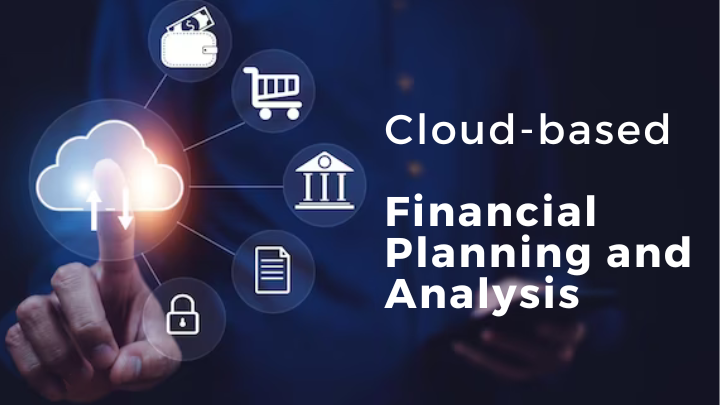
Cloud financial planning and analysis (FP&A) is the process of using cloud-based software to automate and streamline the financial planning and analysis process. Cloud FP&A solutions typically offer a variety of features, such as planning & budgeting, reporting & analysis, collaboration, and data integration. It offers a variety of benefits, including improved accuracy, reduced cost, enhanced speed, and a better decision-making process.
Cloud-based FP&A solutions are transforming companies’ approach to financial management and offering them a competitive edge in today’s fast-changing business dynamics with real-time reporting, predictive analytics, and artificial intelligence (AI). Let us have a look at the emerging technologies in cloud FP&A and their impact.
Emerging Technologies for Cloud FP&A
The following are some of the innovations in financial management that are driven by the rise of various cloud-based tools for financial planning and analysis:
1. Artificial Intelligence and Machine Learning
Artificial intelligence (AI) and Machine Learning (ML) are used to automate routine tasks, including data input, and give insights into financial performance that would be challenging to determine manually. Many companies are engaged in cloud FP&A for AI & ML. In Workday’s Adaptive Planning, for instance, forecasting is automated, anomalies are found, and real-time financial data insights are provided.
Oracle’s Enterprise Performance Management Cloud uses ML techniques to increase forecasting precision, automate procedures, and spot patterns in financial data. While IBM’s Planning Analytics automates routine operations and improves decision-making, Adaptive Insights provides predictive analytics to help organizations with budgeting, forecasting, and reporting. Last but not least, SAP’s Analytics Cloud automates forecasts, detects anomalies, and improves financial performance using machine learning algorithms.
2. Predictive Analytics
Predictive maintenance and cloud FP&A solution sets are offered by multiple companies to forecast events in the future. Predictive analytics analyzes the current and historical data using statistical algorithms and ML. The necessary computational capacity may be provided via cloud-based systems to carry out sophisticated predictive analytics. For example, A cloud-based system from IBM called Maximo combines the powers of asset management, task planning, and predictive maintenance. Maximo can analyze data from sensors and other sources and use ML algorithms to forecast when equipment breakdowns can happen.
Similarly, Microsoft’s Azure IoT Hub utilizes ML to analyze sensor data and forecast equipment breakdowns in the cloud. Microsoft’s Power BI is integrated with Azure IoT Hub to analyze and visualize data. Predictive analytics capabilities are a feature of Oracle Planning and Budgeting Cloud Service, a cloud-based financial planning and analysis service. This program can help organizations predict their future financial success using past data and current market patterns.
Finally, SAP Predictive Maintenance and Service, a cloud-based predictive maintenance system, employs ML to analyze sensor data and detect probable equipment breakdowns. For financial forecasting and analysis, the platform also interacts with SAP’s financial planning and analysis tools.

3. Natural Language Processing
The use of natural language in communication between humans and computers is the focus of the AI subfield of natural language processing (NLP). Emails, reports, and social media include unstructured financial data that may be mined for useful insights using NLP. Companies may gain insights into consumer behavior, market trends, and other elements that affect financial performance due to cloud FP&A and NLP. Workday, Anaplan, IBM, and Microsoft are a few businesses that provide these solutions.
For example, Workday Adaptive Planning, a cloud-based application from Workday, can examine unstructured data such as emails or social media postings to find patterns or trends that might affect financial performance. Using ML algorithms, Anaplan’s cloud-based software can also examine unstructured data to spot patterns and trends and forecast future financial performance. Watson Natural Language Understanding, an IBM cloud-based NLP system, can analyze unstructured data to derive insights about consumer mood, market trends, and other variables that might affect financial performance. IBM offers cloud-based financial planning and analysis tools that can be linked with the software.
Similarly, Microsoft provides Azure Cognitive Services, a cloud-based NLP tool that can mine unstructured data for information on consumer sentiment, behavior, and other aspects. This solution can be connected with Microsoft Dynamics 365 Finance and other cloud-based financial planning and analysis tools.
4. Robotic Process Automation
Using programmed robots, the robotic process automation (RPA) technique automates repetitive operations such as data input and report production. RPA may increase productivity and accuracy, enabling companies to concentrate on more critical activities. To automate financial operations, businesses provide cloud-based FP&A solutions with RPA capabilities. UiPath, Automation Anywhere, Blue Prism, and WorkFusion are examples. UiPath’s cloud-based RPA platform can automate repetitive finance and accounting tasks.
At the same time, Automation Anywhere’s software uses ML algorithms to improve accuracy and reduce errors in data entry, invoice processing, and report generation. Blue Prism’s platform can automate various finance and accounting processes, such as journal entry processing and accounts payable and receivable. The solution by WorkFusion can automate financial processes such as intercompany transactions and tax preparation using ML algorithms to enhance accuracy.
These cloud-based RPA solutions can be integrated with various financial systems to provide end-to-end automation of financial processes.
5. Blockchain
Blockchain is a decentralized and distributed ledger system for securely storing and sharing financial data. Blockchain technology may increase openness and accountability, lowering the risk of fraud and mistakes. Some companies provide cloud-based FP&A solutions that use blockchain technology to increase transparency, minimize fraud, and improve financial reporting.
For instance, Oracle’s blockchain platform, hosted on the cloud, may be combined with its financial planning and analysis products to give real-time financial reporting and analysis. The IBM Blockchain Platform, hosted in the cloud, may be used to automate financial transactions, increase supply chain transparency, and expedite regulatory compliance. It may also be coupled with IBM’s financial planning and analysis tools for enhanced financial reporting and analysis.
SAP Blockchain Platform, which is hosted in the cloud, may be used to increase supply chain transparency, decrease fraud, and expedite financial procedures. It helps enable real-time financial reporting and analysis, which can be linked with SAP’s financial planning and analysis tools.

Conclusion
In conclusion, cloud FP&A systems are becoming crucial to contemporary financial management. Companies can now access cutting-edge cloud-based solutions, such as blockchain technology, RPA, predictive analytics, NLP, AI, and ML. With the help of these technologies, companies may automate repetitive activities, acquire insights from real-time financial data, forecast future financial performance, and enhance financial reporting & analysis.
Companies now have a competitive advantage with the adoption of cloud-based FP&A solutions, which increase their productivity, accuracy, and accessibility, and allow them to make better financial decisions in today’s rapidly changing business environment. Without question, the cloud, where businesses can streamline financial processes, reduce risks, and boost financial performance, is where financial management will be carried out.
